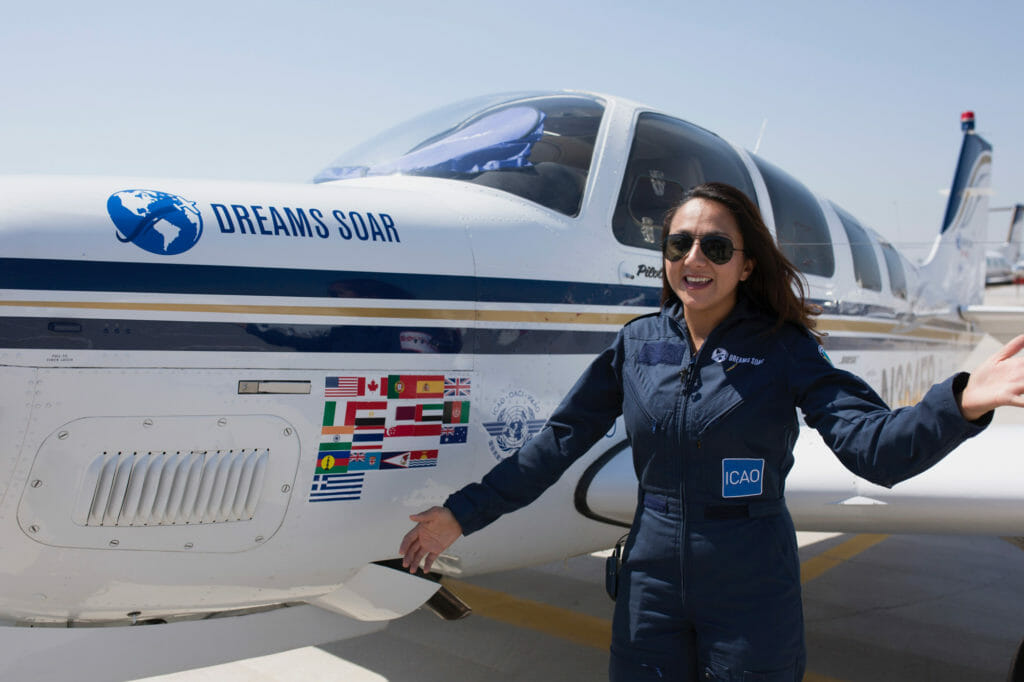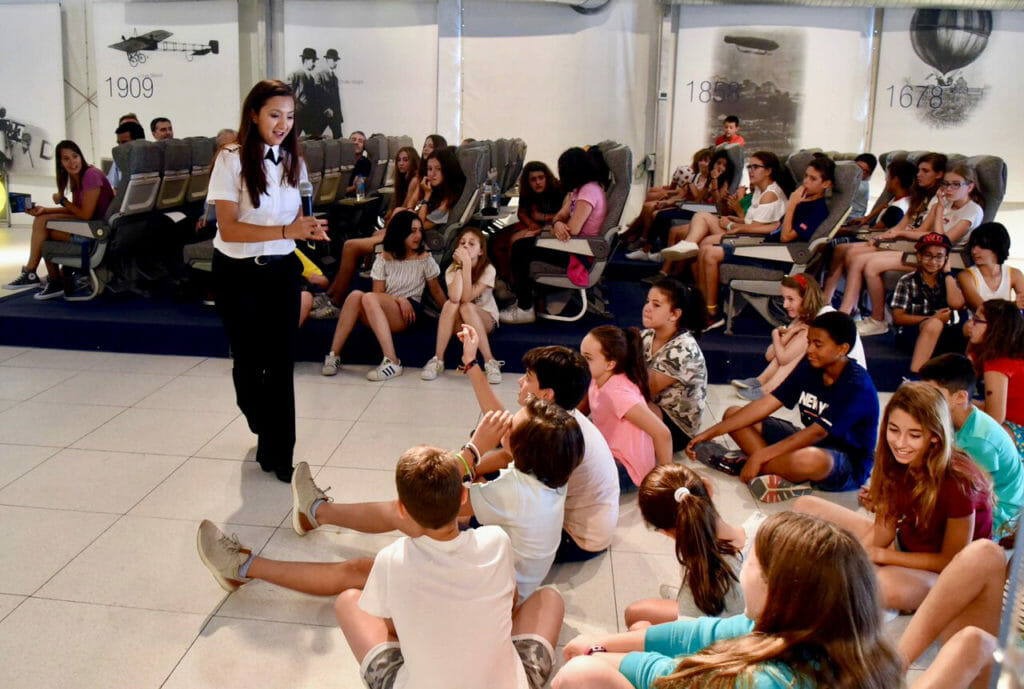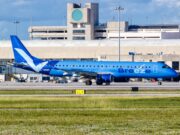
Aviation is one of the most intriguing industries. It fascinates anyone who has experienced it, beginning with those who command the skies to get us safely from one place to another – the pilots. Having a cockpit, as an “office” is just one example of how unique aviation can be! As a pilot, I’ve noticed how people gravitate to me to convey a genuine interest in learning more about what we do daily in our vocation. As a consequence of all this curiosity and interest, pilots are often met with a multitude of questions, ranging from the craft of flying to how schedules are devised. It seems that the general public has preconceived ideas of what a pilot looks like. When I inform people of my profession, the involuntary response I often get is one of complete shock with a mix of confusion. There exists a stereotypical character-type for airline pilots — the middle-aged, white male. There are many pilots today who do not fit that description, but female pilots have a long way to go to be within the norms. Of the roughly 130,000 pilots globally, only 3% are women. However, there is one thing that we all share in common, irrespective of our race, color, age, religion, or sex – our dream and passion for aviation.
On the pursuit to fulfill our dreams, we all have experiences that shape and help define who we are. In other words, some have it easier than others, which is why I’ve chosen to share the story of my college friend and colleague, Shaesta Waiz, who has inspired and captured the hearts of thousands of people worldwide. Shaesta was born in a refugee camp in Afghanistan. At the time, the Soviets were invading the country and her family was desperate to flee. With relentless grit and persistence, her family managed to escape and emigrated to the United States. Shaesta’s family, which eventually included Shaesta’s five sisters, settled in Richmond, California, an disadvantaged area geographically positioned on the outskirts of the bay area. Shaesta even recalls a day when the school she was attending lost its funding, causing it to close its doors. She was told to simply “not show up,” leaving her disheartened. She began to believe that perhaps life was all about getting married and starting a family instead of trying to pursue a dream. Ultimately, Shaesta persevered and overcame the obstacles that stood in the way of her getting an education. Shaesta successfully graduated from high school and planned a trip to sunny Florida to visit her aunt.
She boarded a Delta Air Lines Boeing 767 airplane and took a flight that would change her life forever. Shaesta characterizes this experience as unforgettable because it made her recognize her dream and her purpose in life. After she landed in Jacksonville, Florida, Shaesta sought to meet her aunt and once she found her, she immediately told her aunt that she didn’t want to leave the airport — or at least not so soon. She wanted to learn as much as she could and inquire about the steps necessary to become a pilot. She remembers saying, “I want to stay at the airport and become a pilot.”
While in Jacksonville, Shaesta began researching ways that would help transform her dreams into a reality. Conveniently, not too many miles away, laid the world’s biggest aviation university — Embry-Riddle Aeronautical University. Shaesta decided to get her grades up and went to community college for two years. She then applied for admission to the flight program at Embry-Riddle Aeronautical University. Not only was she accepted, she was afforded scholarships. Shaesta recalls that while her immediate family fully supported her endeavors, her extended family had a different sentiment. Unfortunately, some members of her family believed that Shaesta’s priorities ought to be more aligned with getting married and starting a family. However, Shaesta soon realized that the only thing that mattered was the support of her parents, which she unconditionally had. While attending Embry-Riddle, Shaesta noticed that there wasn’t much of a female presence on campus and for those who were female, there were limited ways to create a network among themselves. Within time, with planning and university support, Shaesta founded the Women’s Ambassador Program which, in just two years, helped increase female enrollments. Shaesta uncovered another passion and purpose for life — to encourage and mentor women and children who are born into unfortunate circumstances, as she was. Dreams Soar was born.

Dreams Soar is a non-profit organization aimed to inspire young girls and women worldwide to dream big and achieve more, specifically in aviation and other STEM (science, technology, engineering, and math) fields.
One of the triumphs of the non- profit organization came in the form of an opportunity. The International Civil Aviation Organization offered its support of a plan she had been designing for two years. Shaesta’s idea was to fly solo around the world in a single engine 2001 Beechcraft Bonanza A360, inspiring youth at every stop.
On May 13, 2017 Shaesta began her global journey, despite the resistance she faced from people who were trying to convince her to take a copilot with her. She ignored the emails and text messages. She was told to turn around many times, but she continued. Over the course of this long solo flight, Shaesta came face-to-face with more than 3000 young people whom she inspired in locations such as Afghanistan, India, Greece, and the United Arab Emirates. She visited 22 countries across five continents. The entire trip took 145 days. In addition to the impact she had on those whom she saw in-person, Shaesta made sure to share her journey online and she created an interactive experience for viewers who could stream some of her inspirational speeches.
Overall, the key take-away from this rousing story is to follow your dreams, no matter how big or out of reach you may think they are. Shaesta’s story reminds us that all things worthwhile in life require dedication, faith, and sacrifice. Let’s follow Shaesta’s example and empower others by leading by example. ACN

























































